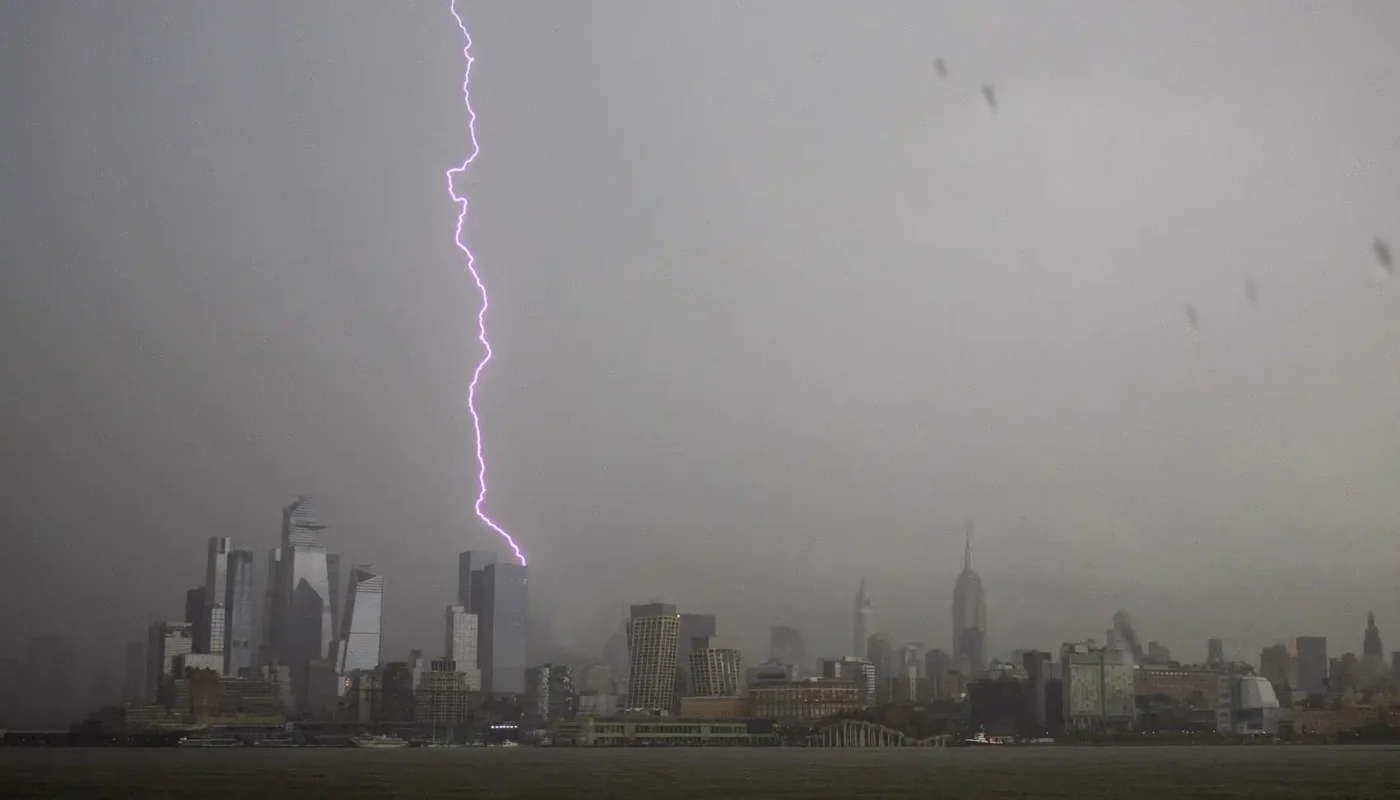Gov. Kathy Hochul declared a State of Emergency on Sunday, June 22, 2025, as 32 counties confronted both broken roofs and rising thermometers. The order remains in force while officials dig out from a violent weekend storm and brace for a multi-day heat wave. Weather reporters talk about numbers flirting with, if not outright surpassing, the old statewide records.
Weekend storms, traveling under a banner of widespread severe thunderstorm watches, ripped from the North Country down through the Southern Tier and into the Capital District. Wind gusts tipped over trees, ripped away power cables, and knocked electricity out to roughly 50,000 households by midday Monday. Heavy rains- some estimates put the rate near two inches an hour- turned already swollen creek beds into fast-moving channels. Flash flooding is now listed as a serious threat, particularly in neighborhoods where drainage systems have yet to fully clear debris.
The human toll is heartbreaking: two young children in Oneida County were crushed when a hardwood fell onto their home, and a third life lost elsewhere is confirmed by the coroner. Police and emergency crews are still compiling full damage numbers. Local volunteers have already begun bringing food and water to those stranded without power, even as higher temperatures threaten to push the humane limits on how long ice packs in coolers will last.
Compounding the challenge, meteorologists are now warning of a fierce, multi-day heat wave. Beginning Sunday and likely stretching through mid-week, the heat index across New York could hover in the 90s and-top even 100 degrees in isolated pockets. The unrelenting warmth, coupled with scant cooling at night, places public health in a precarious spot, especially for the elderly, the ill, and those without reliable air conditioning.
Since Friday, a State of Emergency has been formally declared for a sweeping area that includes every borough of New York City and runs all the way to the Canadian border. The full list of affected counties reads like this: Albany, Bronx, Broome, Chenango, Clinton, Columbia, Cortland, Delaware, Dutchess, Essex, Greene, Kings, Madison, Nassau, New York, Oneida, Onondaga, Orange, Otsego, Putnam, Queens, Rensselaer, Richmond, Rockland, Saratoga, Schenectady, Suffolk, Tioga, Ulster, Warren, Washington, and Westchester.
State Responds, Cautions Public
Branding the situation an emergency, Governor Hochul has placed the State Emergency Operations Center in Enhanced Monitoring Mode. Crews from every major agency are now in the field, rolling out light towers to darkened blocks and loading trucks with generators, pumps, and other staples drawn from the nine regional stockpiles. Swift-water rescuers and specially trained canine teams sit ready to move as soon as waters rise or streets flood.
Emergency managers are imploring residents to act fast in two key areas. First, drink water-water by itself, not soda, beer, or fancy energy mixers-because the body needs simple hydration when temperatures soar.
Second, cool off whenever possible; an air-conditioned room, a quiet library, or a bustling shopping mall can be lifesaving. Roughly between 11 a.m. and 4 p.m. the sun is relentless, so any outdoor chore or commute should pause or be broken up by long stays in shade or indoors. Dressing lightly-waspy cotton, pale colors, loose cuts-lets perspiration do its job rather than trapping heat. Most crucial of all: never, ever leave a child, an elder, or a pet locked inside a parked car, even for a minute; the air inside turns lethal long before anyone expects it.
Make a point of checking in on neighbors whose health may be frail-the elderly, small children, and people managing long-term medical issues often struggle first when the temperature spikes. A simple knock on the door or a quick text can alert you if someone needs ice water or a ride to cooler indoor space.
Familiarize yourself with the telltale warnings of heat exhaustionheavy perspiration, light-headedness, and queasy stomach-and heat strokewhich includes a soaring body temperature, flushed skin, and sudden confusion. The moment stroke signs appear, dialing 911 becomes the only acceptable choice.
New Yorkers can plug into near-instant updates by sending a text containing their county or borough to 333111. The short alert pings keep residents posted on anything from record highs to disruptive thunderstorms.
The overlap of extreme heat and whatever secondary crisis may lurk in the forecast demands that everyone stay several steps ahead. Coordinated check-ins, rapid reporting of anyone in distress, and strict adherence to safety advice compose the best formula for limiting harm and speeding recovery. Keep a radio or smartphone app open and watch local broadcasts for word on how the situation is shifting.



